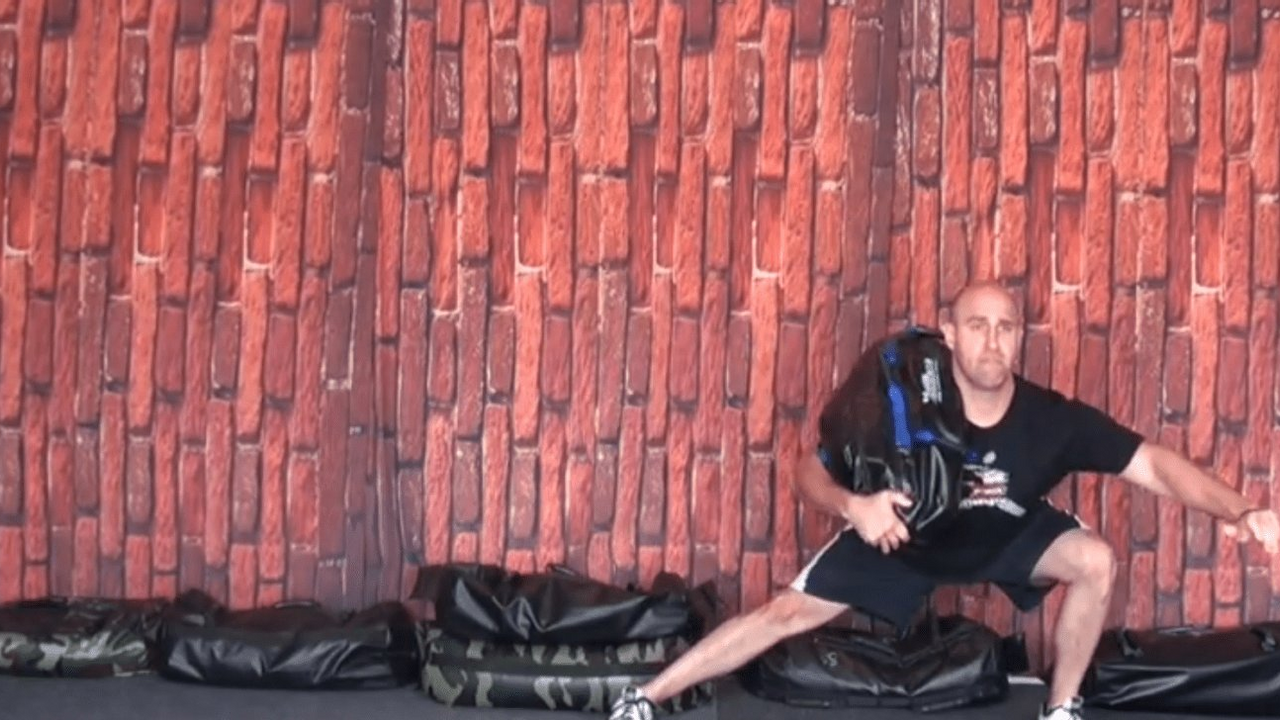
21 Sandbag Exercises to Build Massive Leg Strength, CORE Stability and Rotational Power for Fighters and Grapplers
by Josh Henkin
I’ve been lucky, having worked with some top fighting coaches I’ve gotten to watch, listen, and really examine what fighters need. Funny enough many of these fighters haven’t liked me in the moment because we really tapped into what would make them better. Let’s face it, working on our weaknesses is generally a humbling experience, however, the result of dominating in our sport is the perfect reward.
Now, you might be thinking you’ve read an article like this a million times, but I think you might be very surprised what I have to share. Some of these concepts may not seem sexy, but they work amazingly well. The only question I have is do you have the discipline to work on them to really become a game changer?
Lower Leg Strength
You might think fighters have great lower leg strength. Whether it comes from kicking, punching, or many of the different types of stances they assume. I have found overall though that lower leg strength was pretty bad. While skill training does develop a small base level of lower leg strength, the fact we don’t continue to work on developing lower leg strength means we don’t get that much better.
Why should you care? Lower leg strength allows us to develop more powerful punches and kicks for one. Force for both comes from the ground up, therefore, the stronger lower leg strength you have the more force you can create. Secondly, we know that if we have a weakness, the next joint up bears a lot of the stress. In this case we can see a lack of lower leg strength can lead to knee, hip, and lower back issues.
We can train lower leg strength a few different ways.There is using different stances, being truly single leg, and transitions.The following drills demonstrate aspects of each:
Stances: Lunge Variations
- Front Load Up Downs
- Suitcase to Max Lunge
- Lateral Shoulder to Balance
- Deceleration Cleans
- Front Loaded Lateral Good Mornings
Single Leg:
- Step-Down press outs
- Shoulder Step-up
- Single Leg Step-ups
- Front Loaded Single Leg Good Mornings to Balance
Transitions:
- Front Loaded Bridge to Wrap Around
- Max Lunge Clean to Deceleration Clean
- Lateral Step Clean to Cossack Squat
Reactive Core Strength
Core is nothing new to fighters, however, the idea of a more reactive core typically is new. What we mean is a core that learns to contract quickly, reflexively, and segmentally. While most work on crunches and planks, the need of developing a far more well rounded core is missed by most!
What’s wrong with planks? These drills serve as a good foundation, however, long-term use doesn’t prepare fighters for the real needs of their sport. research paper by Justin et al actually stated:
“Currently, plank exercises are considered an adequate method of training the core for athletes to improve core strength and stability. This is a problem because it puts the athletes in a nonfunctional static position that is very rarely replicated in the demands of sport-related activities. The core is the center of most kinetic chains in the body and should be trained accordingly.”
How do we accomplish this goal of a reactive core? Often times it means using drills that force us to both produce and resist force which is often far more difficult than it sounds. We are typically so focused on producing force that resisting it often gets overlooked. However, if you look at the real needs of a fighter, they need BOTH!
Here are some drills that help develop that reactive core:
- Lateral Drag to Support Push-up
- Half Around the World Lunge
- Rotational Thruster
- Lunge to Arc Press
- Sprinter Stance Snatches
Rotational Training
I’ve seen it a million times, fighters supposedly working on their punching power by punching with bands back and forth. While that may appear to be working one’s punching strength, it really isn’t. Kicking, punching, and most real athletic activities actually start by an action of pivoting the foot into the ground.
By creating this specific foot action, we use force up our entire kinetic chain to develop powerful movements. We don’t really punch with our arms, rather the arms follow the force that we create from the ground with this powerful action.
Most fighters also make the mistake thinking that swinging a weight around their body constitutes rotational training. This isn’t, it is actually resisting rotation. True rotational training has to always follow the foot work out a quick pivot create explosive internal rotation of the hip following up to the core.
The following drills are dynamic ways of developing this skill and creating knockout out type of rotational strength!
- Around the World
- Shoveling
- Press Out to Around the World
- Inside Out Cleans
Applying these principles of functional movement will greatly excel your training. After all, the REAL purpose of strength training for athletes is to improve their movement efficiency. Strength without movement rarely transfers to sport. We have to think about how the body naturally moves and even more so, how the fighter creates power. Understanding these mechanics will give you an edge you won’t believe!
Josh Henkin, CSCS, Master RKC, has been in the fitness industry for over 20 years. He has worked with MMA athletes, military, police, and fire departments from all over the US. Josh has lectured and taught his DVRT Ultimate Sandbag Training to athletes and coaches in over 13 counties around the world and is a highly sought after speaker for National Academy of Sports Medicine and the National Strength & Conditioning Association. You can learn more HERE.




